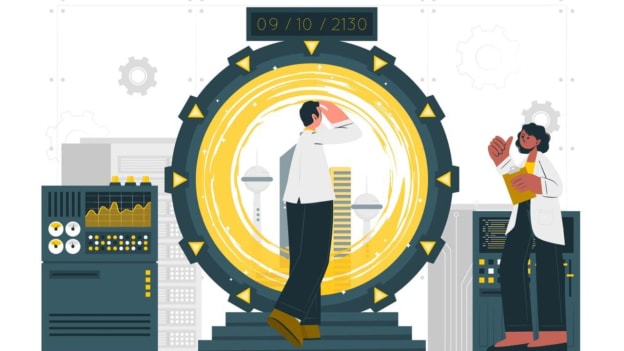A call for Productivity 2.0: A multi-dimensional approach beyond traditional metrics

71 per cent of business leaders feel immense pressure to increase productivity among their workers, according to a survey by Slack. However, the majority are focusing on input rather than output when measuring productivity. As a result, workers are spending a significant portion of their time performing work, such as appearing busy rather than accomplishing meaningful tasks.
This includes actions like participating in work threads frequently and responding to emails promptly, even outside of regular hours. Furthermore, worker engagement, which reflects how well individuals understand and connect with their jobs, has declined since the early stages of the pandemic, according to a Gallup study.
Given the strong correlation between worker engagement and productivity, it's likely that productivity has also decreased. Additionally, workers are experiencing high rates of burnout, further hindering productivity. This situation highlights the challenge of accurately measuring productivity and raises questions about its significance in predicting success.
Despite the three years since the onset of the pandemic, which offered opportunities to improve work conditions, many companies are still struggling to adapt. However, there is potential for positive change. Remote work, which became widespread during the pandemic, has shown benefits such as increased flexibility and job satisfaction for employees.
Moreover, it enables companies to access a broader and potentially more diverse talent pool, leading to improved business outcomes. As we navigate this pivotal moment, it's crucial for both employees and employers to recognise the opportunity to create a better work environment.
While economic uncertainties may prompt some organisations to retract flexibility measures implemented during the pandemic, there is still a chance to prioritise employee well-being and productivity. It begins with reevaluating how productivity is measured and focusing on meaningful outcomes rather than mere input.
Are employers' perceptions of productivity fundamentally flawed?
The concept of productivity can vary significantly depending on the job, industry, and individual. For example, while the number of products sold may be a metric of productivity for someone in product sales, it may not apply to IT professionals. Many aspects of knowledge workers' jobs are complex and not easily quantifiable, making it particularly challenging to measure productivity in these roles as well.
Research on remote work and productivity further complicates the issue, as studies often focus on quantifiable outcomes in more straightforward jobs, such as call centre work. However, the findings are mixed. For instance, some studies suggest that remote call centre workers may be more productive, while others indicate a decrease in productivity compared to in-office workers. Similarly, studies on software engineers' productivity before the pandemic yielded varied results, highlighting the importance of context, management practices, and incentive structures.
While some engineers located in different buildings were more productive, they also received less mentorship, potentially affecting their long-term productivity. Despite this complexity, many executives rely on activity metrics such as emails sent or hours worked as the main measure of productivity.
However, this approach may incentivise behaviours like sending more emails or staying at one's desk longer, rather than focusing on meaningful outcomes. So, while employers may attempt to measure productivity, the diverse nature of work and the limitations of traditional metrics suggest that their perceptions may not fully capture the true essence of productivity in today's dynamic workplace.
Can happiness and engagement boost productivity?
Absolutely!
Happiness and fulfilment in the workplace directly correlate with increased productivity, as demonstrated by a University of Warwick study involving 700 participants. The research revealed a 12% productivity boost among those who reported being happy at work.
In the study, participants were subjected to various experiments to gauge their levels of happiness and subsequent productivity. Some were exposed to a comedy movie clip, while others received complimentary chocolates, drinks, and fruit. Conversely, some participants were asked about recent family tragedies to assess any potential impact on productivity.
Notably, one experiment showed that a mere $2 investment per person in chocolates and fruit led to a 20% increase in productivity for a short period. Professor Andrew Oswald, one of the researchers, highlighted the success of companies like Google, which have invested heavily in employee support, resulting in a remarkable 37% rise in employee satisfaction.
In a recent example, PepsiCo observed a surge in employees opting to work from the office. Pavitra Singh, CHRO of PepsiCo India, explained that the pandemic prompted a significant shift in employees' working styles globally. To create a conducive "Work that works" environment, PepsiCo conducted surveys to understand employees' needs, prioritising comfort, flexibility, and enjoyment.
PepsiCo designed a new office space based on the concept that employees thrive when given the freedom to choose their work settings. The office aims to be a haven of joy, vibrancy, and comfort, serving as a home away from home where employees can express themselves freely and collaborate as a team.
Despite the option to work from home, many employees prefer to come to the office for enhanced connections and camaraderie, contributing to a positive work environment. The office design also accommodates various cohorts, including children who enjoy visiting during school breaks. PepsiCo encourages family members to join in office celebrations, fostering a sense of community and unity during key milestones.
What are different ways to boost productivity?
New McKinsey research suggests that employee disengagement and turnover could cost a median-size S&P 500 company between $228 million and $355 million annually in lost productivity, totalling at least $1.1 billion over five years per company.
To tackle this issue, corporate leaders need to recognise that their workforces have diverse employee experiences and require tailored approaches to boost performance. By understanding and addressing the needs of different employee groups, leaders can enhance satisfaction, commitment, performance, well-being, and ultimately, retention and engagement.
McKinsey's research also identified six distinct employee archetypes spanning a spectrum of satisfaction, engagement, performance, and well-being. These include:
The Quitters: Employees who, while not necessarily low performers, may be among the least satisfied and committed, potentially leading to attrition.
The Disruptors: Around 11% of the workforce, this group can have a significant negative impact due to organisational treatment and peer perception.
The Mildly Disengaged: Representing about 32% of the workforce, these employees report below-average commitment and performance levels, posing a challenge to organisational productivity.
The Double-Dippers: Full-time workers who hold multiple jobs without employer knowledge, particularly prevalent in remote settings.
The Reliable and Committed: The organisational core, these employees demonstrate high levels of satisfaction and commitment, contributing above and beyond to their roles.
The Thriving Stars: Top talent exhibiting exceptional performance and well-being, creating a positive impact on team dynamics and productivity.
To increase productivity among these six types of employees, tailored strategies are needed for each group:
The Quitters:
- Conduct exit interviews to understand reasons for dissatisfaction and address underlying issues.
- Implement retention strategies, such as providing growth opportunities and recognising achievements.
- Foster a positive work culture that promotes job satisfaction and commitment.
The Disruptors:
- Provide clear expectations and goals to align their efforts positively.
- Offer constructive feedback and address concerns promptly.
- Create an inclusive environment to make them feel valued and heard.
The Mildly Disengaged:
- Communicate the importance of their role and its impact on the organisation.
- Provide opportunities for skill development and career advancement.
- Encourage a work-life balance to enhance overall well-being.
The Double-Dippers:
- Address workload and resource issues to minimise the need for additional jobs.
- Encourage open communication about workload and stress.
- Ensure policies are in place regarding dual employment to maintain transparency.
The Reliable and Committed:
- Recognise and reward their contributions to reinforce their commitment.
- Encourage mentorship programs to share their expertise with others.
- Provide avenues for continuous learning to keep them engaged.
The Thriving Stars:
- Recognise and celebrate their achievements regularly.
- Provide challenging and meaningful projects to keep them engaged.
- Foster a supportive environment that encourages collaboration and innovation.
You can also read:
- Unsure how to employ Gen AI for Cultural Revolution 2.0? HR expert guides on optimal impact
- Banning Gen AI tools not enough - 70% employees want clear AI guidelines: Survey
- February 2024 C-suite appointments: A recap of HR movements of the month
How can productivity be assessed or gauged?
For over a century, organisations have utilised traditional productivity metrics such as hours worked, time on task, product output, and revenue per employee. These metrics originated during the Industrial Revolution and were effective for an era focused on mass production and standardised processes.
However, with the onset of the Fourth Industrial Revolution (4IR), characterised by technological advancements and interconnected systems, it's evident that the workplace landscape has shifted. As we move towards a new way of working that prioritises human performance and outcomes, it's imperative to reconsider our approach to productivity, adopting a fresh mindset and implementing new metrics suited to this evolving environment.
Outcome-Based Metrics:
- Key Performance Indicators (KPIs): Define specific KPIs that align with organisational goals and objectives. These could include metrics such as customer satisfaction scores, project completion rates, or innovation metrics.
- Goal Attainment: Measure employees' success in achieving predefined goals and milestones. This could involve setting SMART (Specific, Measurable, Achievable, Relevant, Time-bound) goals and regularly assessing progress towards them.
Quality and Impact:
- Quality of Work: Assess the quality of outputs and deliverables produced by employees. This could involve peer reviews, client feedback, or quality assurance audits to ensure that work meets or exceeds expectations.
- Impact Metrics: Measure the impact of employees' work on the organization, clients, or stakeholders. This could include metrics such as cost savings, revenue growth, or improvements in customer satisfaction scores.
Efficiency and Effectiveness:
Process Efficiency: Evaluate the efficiency of workflows and processes within the organisation. This could involve analysing cycle times, bottlenecks, or waste in processes and identifying opportunities for improvement.
Task Completion Time: Measure the time taken to complete specific tasks or projects. This could involve using project management tools or time-tracking software to monitor task duration and identify areas where efficiencies can be gained.
Employee Engagement and Well-being:
- Employee Satisfaction Surveys: Regularly solicit feedback from employees to assess their satisfaction levels, engagement, and well-being. This could involve pulse surveys, anonymous feedback mechanisms, or focus groups to gather insights into employee sentiments.
- Work-Life Balance: Measure employees' ability to maintain a healthy work-life balance. This could involve tracking indicators such as overtime hours, burnout rates, or utilization of flexible work arrangements.
Collaboration and Team Dynamics:
Team Performance Metrics: Assess the effectiveness of teams in achieving collective goals. This could involve measuring metrics such as team cohesion, communication effectiveness, or collaboration tools usage.
Cross-Functional Collaboration: Measure employees' ability to collaborate across departments or teams. This could involve tracking the frequency and effectiveness of cross-functional meetings, joint projects, or shared resources.
Innovation and Creativity:
Innovation Metrics: Measure employees' contributions to innovation and creativity within the organization. This could involve tracking the number of new ideas generated, patents filed, or successful implementation of innovative projects.
Creativity Assessments: Evaluate employees' creative thinking skills and problem-solving abilities. This could involve assessments, workshops, or brainstorming sessions to foster a culture of innovation.
Learning and Development:
Skills Development: Measure employees' progress in acquiring new skills and knowledge. This could involve tracking completion rates of training programs, certifications earned, or participation in skill-building initiatives.
Knowledge Sharing: Assess employees' contributions to knowledge sharing and learning within the organisation. This could involve tracking participation in knowledge-sharing platforms, mentorship programs, or peer-to-peer learning initiatives.
The contemporary concept of productivity
Now that we've embraced the evolved concept of productivity, let's delve into the realm of contemporary work ideals. Today's workforce is buzzing with discussions on innovative work practices and expectations. From flexible schedules to remote work options, employees are advocating for modern approaches that prioritize balance, autonomy, and efficiency. Let's explore some of the popular trends reshaping the way we work and the expectations employees have in this dynamic landscape.
Four-Day Workweek:
The concept of a four-day workweek involves compressing the traditional 40-hour workweek into four days instead of five. Employees work longer hours on those four days but enjoy an additional day off each week.
This approach aims to increase employee satisfaction, reduce burnout, and improve work-life balance. It can also lead to higher productivity as employees may feel more motivated to maximise their time during the shorter workweek.
Flexible Work Hours:
Flexible work hours allow employees to choose their start and end times within a specified range, rather than adhering to a strict 9-to-5 schedule. This flexibility accommodates employees' diverse needs and preferences, such as caregiving responsibilities, commuting constraints, or personal commitments.
By empowering employees to manage their schedules, organisations can enhance job satisfaction, reduce stress, and increase productivity. Employees may feel more engaged and motivated when they have control over their work hours.
Remote Work and Telecommuting:
Remote work, also known as telecommuting or telework, allows employees to work from locations outside the traditional office setting, such as their homes, co-working spaces, or satellite offices.
Remote work offers flexibility, autonomy, and work-life balance, leading to increased productivity and job satisfaction. It eliminates commuting time and costs, reduces distractions, and enables employees to create a customized work environment conducive to their productivity.
ChronoFlex and Flexible Scheduling:
ChronoFlex is a concept that combines flexible scheduling with the use of technology to optimise productivity. Employees have the freedom to choose when and where they work based on their individual preferences and peak productivity hours.
This approach recognises that not all employees are most productive during traditional work hours and allows them to align their work schedules with their natural rhythms. It promotes efficiency, creativity, and employee well-being by accommodating diverse work styles and preferences.
Results-Based Work Environment:
In a results-based work environment, employees are evaluated based on their outcomes and achievements rather than their time spent in the office or completing tasks.
This approach emphasizes accountability, autonomy, and performance-driven goals. Employees have the flexibility to work when and where they are most productive, as long as they meet their objectives and deliver results.
Activity-Based Working (ABW):
Activity-based working (ABW) is a workplace strategy that provides employees with a variety of workspaces and environments designed for specific tasks and activities.
ABW recognises that different tasks require different settings and allows employees to choose where they work based on their needs and preferences. It promotes collaboration, creativity, and productivity by providing employees with the right tools and spaces to support their work activities.
Better management is what companies require
The need for improved management in companies is underscored by the current emphasis on productivity, which may be more reflective of the pressure on managers from their superiors than an accurate representation of workers' capabilities, as noted by Northeastern’s Riedl.
The decision to allow remote work requires justification, making it easier to revert to traditional office-based practices. However, this reversion overlooks opportunities to enhance remote work experiences for the majority of knowledge workers who presently work from home.
Data from WFH Research indicates that 46 per cent work remotely some of the time, while 20 per cent work remotely all the time. Ignoring such opportunities also neglects other crucial factors that contribute to employee happiness and productivity.
Employee engagement, which Gallup estimates cost the global economy $7.8 trillion in lost productivity last year, is particularly low for those required to be physically present at the workplace. The lack of autonomy for those who could work remotely contributes to diminished engagement, according to Jim Harter, Gallup’s chief scientist of workplace management and well-being.
Harter suggests that these challenges can be addressed through better management practices. This includes evaluating individuals based on more than just their email output, establishing clear goals, and maintaining open and frequent communication with employees. While managing remote and hybrid workforces presents challenges, upskilling managers to have meaningful and regular conversations with their teams could lead to the highest levels of productivity ever.
Despite the difficulties in creating remote connections and adapting onboarding and mentoring strategies, addressing these issues is not impossible. By doing so, both employers and employees could experience improved work and productivity, regardless of their physical work location. Harter questions how organisations measured productivity before the pandemic, emphasising the importance of effective management in fostering a productive work environment.















